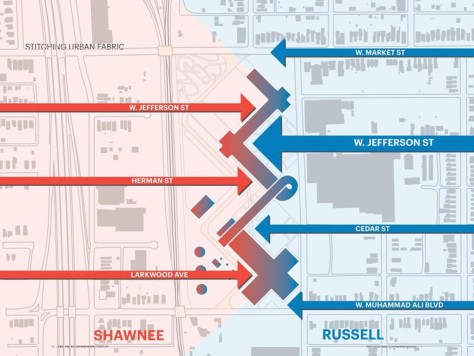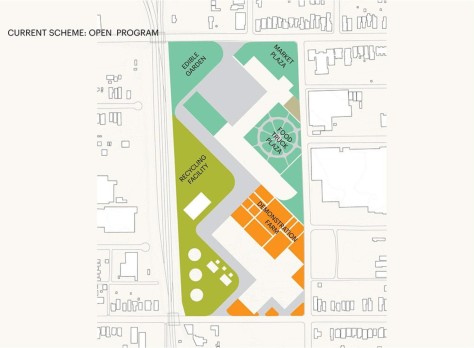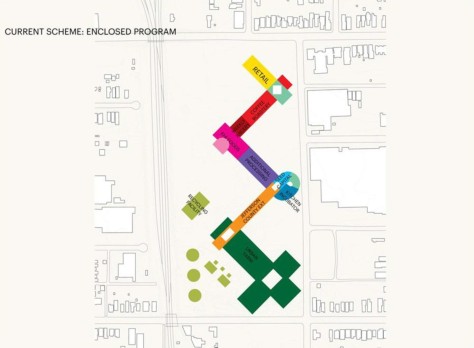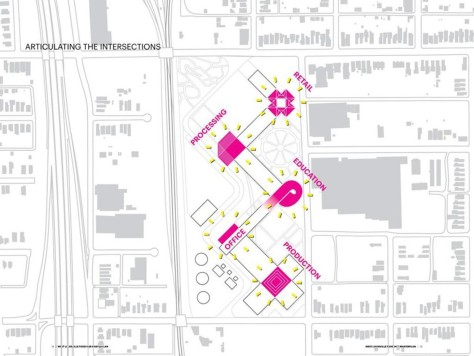
OMA has designed a masterplan for a mixed-use project that will provide a new centralized facility for the growing, selling and distribution of food for local farmers and the community.

Working in collaboration with the non-profit Seed Capital Kentucky for the City of Louisville, the Food Port will take significant steps towards rejuvenating a 24-acre vacant site into an active economic and community hub.

“The diversity of program reflects the full food chain, as well as a new foodscape of public spaces and plazas where producers and consumers meet,” said OMA’s partner-in-charge Shohei Shigematsu, who is also leading the Alimentary Design research studio at Harvard University.

“The Food Port acts as a catalyst to activate the surrounding neighborhoods, exemplifying one of the complex urban relationships between architecture and food that our studio is investigating.”

Located on a former tobacco plant at 30th St. between Market St. and Muhammad Ali Blvd., the project proposes a new model for the relationship between consumer and producer.

The design integrates several key programs that serve and provide for all stages of the food chain, including a kitchen incubator, urban farm, recycling facility and programs that will engage directly with the public such as classrooms, demonstration farm, and local retail.
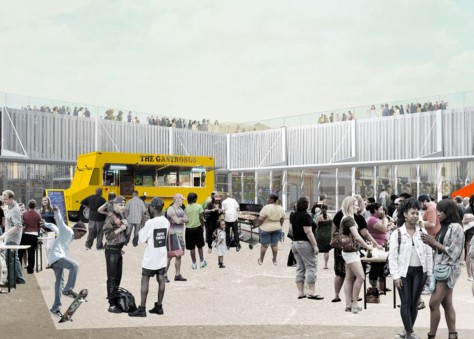
Outdoor spaces include a market plaza, food truck plaza, and an edible garden. The building is organized to allow for systematic expansion in the future.

The West Louisville Food Port is projected to be a 50 million dollar investment, and create nearly 200 new jobs. Groundbreaking is expected for late summer of 2015, with businesses opening in phases. Source by OMA.

Location: West Louisville, USA
Architects: OMA
Local Architects: GBBN Architecture
Year: 2015
Client: Seed Capital Kentucky
Images: Courtesy by OMA / GBBN / Seed Capital Kentucky
via brokensidewalk
